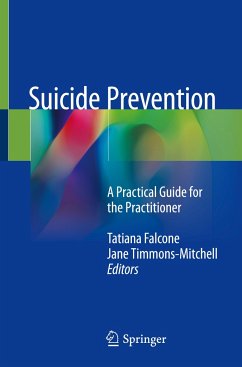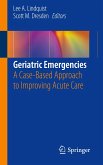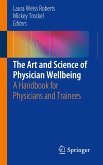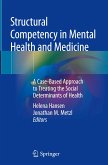This volume is a guide for the hospital workforce related to suicide prevention. Written by experts in the field, this text is the only one that also includes the revised DSM-5 guidelines. It is also the first to cover both prevention in one concise guide, offering a well-rounded approach to long- and short-term prevention.
The book begins by establishing the neurobiology of suicide before discussing the populations at risk for suicide and the various environments where they may present. The book addresses the epidemiology, including groups at heightened risk; etiology, including several types of risk factors; prevention, including large-scale community-based activities; and postvention, including the few evidence-based approaches that are currently available. Unlike any other text on the market, this book does not simply focus on one particular demographic; rather, the book covers a wide range of populations and concerns, includingsuicide in youths, racial minorities, patients suffering from serious mental and physical illnesses, psychopharmacological treatment in special populations, and a wide array of challenging scenarios that are often not addressed in the very few up-to-date resources available.
Suicide Prevention is an outstanding resource for psychiatrists, psychologists, hospitalists, primary care doctors, nurses, social workers, and all medical professionals who may interface with suicidal patients.
The book begins by establishing the neurobiology of suicide before discussing the populations at risk for suicide and the various environments where they may present. The book addresses the epidemiology, including groups at heightened risk; etiology, including several types of risk factors; prevention, including large-scale community-based activities; and postvention, including the few evidence-based approaches that are currently available. Unlike any other text on the market, this book does not simply focus on one particular demographic; rather, the book covers a wide range of populations and concerns, includingsuicide in youths, racial minorities, patients suffering from serious mental and physical illnesses, psychopharmacological treatment in special populations, and a wide array of challenging scenarios that are often not addressed in the very few up-to-date resources available.
Suicide Prevention is an outstanding resource for psychiatrists, psychologists, hospitalists, primary care doctors, nurses, social workers, and all medical professionals who may interface with suicidal patients.
"The book covers suicide risk assessment tools particularly well. The book is clearly written and logically organized. Information about how to interact with third parties and legal issues would be helpful. ... This practical guide answers those questions, provides direction, and shares additional tools that healthcare professionals can use to provide and improve care to prevent suicide." (Valerie E Mathis-Allen, Doody's Book Reviews, September, 2018)








